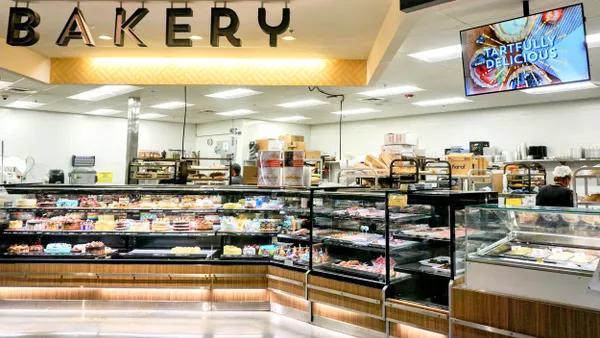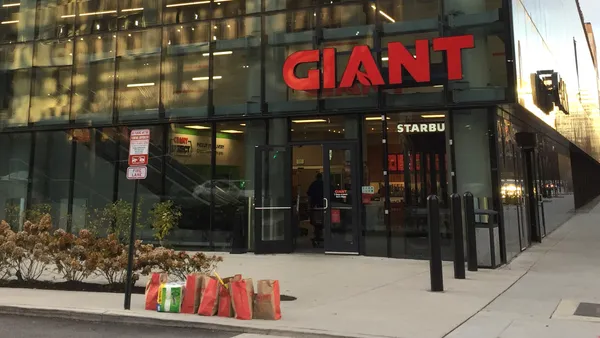Leslie G. Sarasin is the president and CEO of FMI — The Food Industry Association, a trade association advocating for a safer, healthier and more efficient consumer food supply chain.
In the last several years, the ever-increasing speed of change within the food industry has presented enormous challenges. Some of these obstacles stem directly from the global COVID-19 pandemic, when essential food retailers and suppliers remained open while navigating unprecedented supply chain hurdles in real-time even as most other businesses shut their doors.
While the food industry has been resilient, the resulting shifts in consumer behavior and shopping habits, combined with a historic inflationary economic environment, caused prices for all goods and services, including food at the grocery store, to experience sudden, unexpected shifts that put even more pressure on the industry, as well as shoppers.
Yet despite my decades-long career in the food industry, I continue to be amazed by the food industry’s continued resilience, adaptability, and willingness to invest in innovation, all while having among the slimmest profit margins of any consumer sector.

And make no mistake, the food retail landscape is more competitive than ever. Not only are shoppers more savvy in their pursuit of an increasingly more nuanced concept of value, but they also have many more choices in terms of where they buy food, including supermarkets, club stores, supercenters, mass merchants, online retailers, and restaurants.
As FMI's The Food Retailing Industry Speaks 2024 report demonstrates, grocers have responded to the growing level of pressure on their businesses by pursuing a variety of strategies to communicate value to shoppers.
For instance, while shoppers have shown a willingness to travel farther than ever before to stores like supercenters that may offer lower prices, they are also willing to go out of their way to visit stores that offer better quality and variety in fresh foods. To meet those demands, grocers are leveraging their private brand programs and expanding their fresh foods departments, including more space devoted to foodservice items such as fresh grab-and-go selections.
Retailers are also making significant investments to modernize and improve the in-store shopper experience. More than 80% are experimenting with in-store technologies like mobile checkout systems, electronic shelf tags, and self-service ordering kiosks, while two-thirds are emphasizing a quality, personalized shopping experience as a differentiation strategy.
But technology investments aren't limited to in-store modernization. Forty-one percent of food retailers — twice as many as in 2022 — now use artificial intelligence to assist with product assortment, planning, and replenishment.

These efficiencies are also helping the food industry become more sustainable. Both food retailers and suppliers have made major sustainability commitments in a range of areas — including efforts to reduce energy, food waste, and packaging waste — not only to improve productivity, but also to meet consumer demand for more socially responsible companies.
Ultimately, food retailers and suppliers have noted that these shifting consumer behaviors have positively impacted their businesses. For example, both retailers and suppliers are offering more products with beneficial nutrition attributes given shoppers' increased focus on nutrition, health, and well-being.
These evolving consumer behaviors also allow a wide range of approaches for both food retailers and suppliers to market to shoppers, including both traditional and emerging strategies. For instance, email and in-store signage continue to be among the most frequently used and effective communication strategies. Facebook and Instagram have emerged as the most-used social media marketing platforms for retailers, while TikTok has become a starring platform for suppliers.
The food industry landscape is ever-evolving, but recent years have ushered in a rapid period of change unlike anything we've seen in recent memory. Yet as always, the food industry has risen to the occasion. By embracing digital solutions, including direct delivery of food and essential items to customers and convenient click-and-collect services, the industry expanded the options available to consumers that suit their individual preferences for meeting their grocery needs. And despite challenges like high inflation, new and cumbersome regulations, and rising levels of theft, the resilience shines through.
By implementing strategic investments in enhancing shopper experiences and community outreach, the industry continuously demonstrates its commitment to customers despite financial and economic headwinds. Retailers and suppliers are doubling down on providing high-quality, fresh products, enhancing in-store technologies, and delivering unparalleled value and experiences to customers in 2024 and beyond.
Challenges will undoubtedly persist, but with unwavering dedication and an innovative spirit, food retailers and their supplier partners are poised to thrive.













